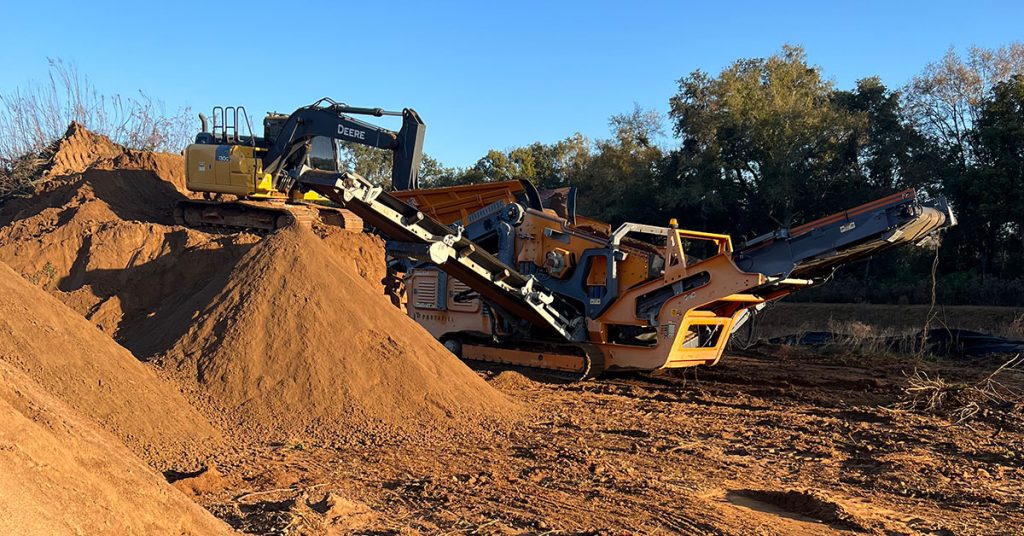Screened topsoil is a refined and enhanced version of the earth’s natural top layer, offering numerous benefits for various landscaping and gardening projects. It’s the go-to choice for achieving healthy plant growth and creating beautiful outdoor spaces. But what exactly makes it so special? Let’s dig in!

Understanding Topsoil
Before diving into the specifics of screened topsoil, it’s essential to understand what topsoil is in general. Topsoil is the uppermost layer of soil, typically the top 5-10 inches. It’s the most nutrient-rich part of the soil profile, teeming with organic matter, minerals, and beneficial microorganisms. This layer is crucial for plant growth, providing the necessary foundation for roots to establish and access vital nutrients. The composition of topsoil varies depending on location and geological factors, influencing its suitability for different plant types.
The Screening Process
Screened topsoil undergoes a meticulous refinement process to remove unwanted materials and improve its overall quality. This process involves passing the topsoil through a screen, which acts like a sieve, separating larger particles from the finer soil. Common materials removed during screening include:
- Rocks and stones
- Roots and sticks
- Clumps of soil
- Debris and other unwanted materials
The result is a consistent, uniform texture, free from obstacles that can hinder plant growth. The size of the screen used can also be adjusted depending on the desired fineness of the finished product.
Benefits of Screened Topsoil
Screened topsoil offers a multitude of advantages over unscreened topsoil, making it a preferred choice for various applications:
- Improved Drainage: The removal of rocks and clumps ensures better drainage, preventing waterlogging and root rot. This is particularly important for plants that are sensitive to excess moisture.
- Enhanced Aeration: The loose, refined texture allows for better air circulation within the soil, promoting healthy root development. Roots require oxygen to thrive, and compacted soil can restrict airflow.
- Nutrient Availability: Screened topsoil often contains a higher concentration of nutrients and organic matter, providing plants with the essential building blocks for growth. This can lead to healthier, more vigorous plants.
- Ease of Use: Its smooth, consistent texture makes it easier to work with, whether you’re spreading it in a garden bed or using it to level a lawn. This can save time and effort during landscaping projects.
- Weed Reduction: The screening process can help remove weed seeds and roots, minimizing weed growth in your garden or landscape. While it won’t eliminate weeds entirely, it can significantly reduce their numbers.
- Versatility: Screened topsoil is suitable for a wide range of applications, from establishing new lawns and gardens to filling raised beds and improving existing soil.
Applications of Screened Topsoil
Screened topsoil is a versatile material with numerous applications in landscaping and gardening:
- New Lawns: Provides a smooth, even base for seeding or sodding, promoting healthy turf growth. A well-prepared base is crucial for establishing a lush, green lawn.
- Gardens: Creates a nutrient-rich environment for flowers, vegetables, and other plants to thrive. The improved drainage and aeration also contribute to healthier plant growth.
- Raised Beds: Offers excellent drainage and aeration for plants in raised garden beds. Raised beds often require well-draining soil to prevent waterlogging.
- Soil Amendment: Improves the quality of existing soil by adding organic matter and enhancing drainage. This can be particularly beneficial for compacted or nutrient-poor soils.
- Filling and Leveling: Can be used to fill in low spots in your yard or level uneven terrain. This can improve the aesthetics and functionality of your outdoor space.
Choosing the Right Screened Topsoil
When selecting screened topsoil, consider the following factors:
- Source: Choose a reputable supplier who can provide information about the source and quality of their topsoil. Local landscape supply companies often have a good understanding of the soil in your area.
- Composition: Look for topsoil that is rich in organic matter and has a balanced mix of sand, silt, and clay. A soil test can help determine the composition of your existing soil and guide your selection.
- Screen Size: The screen size will determine the fineness of the topsoil. A finer screen is generally preferred for gardens and lawns, while a coarser screen may be suitable for filling and leveling.
- Price: Compare prices from different suppliers, but don’t sacrifice quality for cost. Investing in high-quality screened topsoil can lead to healthier plants and a more beautiful landscape.
Using Screened Topsoil Effectively
To maximize the benefits of screened topsoil, follow these tips:
- Preparation: Clear the area of any debris, weeds, or existing vegetation. This will create a clean surface for the new topsoil.
- Application: Spread the topsoil evenly to the desired depth. For new lawns, a depth of 4-6 inches is recommended. For gardens, 6-12 inches is ideal.
- Incorporation: If you’re amending existing soil, mix the screened topsoil thoroughly with the native soil. This will help integrate the new nutrients and improve soil structure.
- Watering: Water the area thoroughly after applying the topsoil to help it settle and establish good contact with the underlying soil. This will also help prevent erosion.
Conclusion
Screened topsoil is a valuable resource for any landscaping or gardening project. Its refined texture, enhanced drainage, and nutrient-rich composition provide an optimal foundation for healthy plant growth and beautiful outdoor spaces. By understanding its benefits and applications, you can make informed decisions and create thriving landscapes that will last for years to come.
